Scott retired from the commercial nuclear industry with over thirty years of experience in Maintenance, Engineering, and Training. Prior to that he served on two aircraft carriers during his time in the U.S. Navy. He has been building models for over 50 years with his first kit being purchased with money from his grandparents for his sixth birthday. With a stash that consists of more aircraft than anything else, Scott still enjoys building a little bit of everything (including but not limited to tanks, cars, show cars, military vehicles (aside from tanks), ships, figures, real space, and some science fiction), which keeps his stash growing. Scott and his wife Fern reside in southwest lower Michigan, not far from South Bend, Indiana, and have three adult children and currently three grandchildren as well as a small dog and a large cat.
Scott Hollingshead
Reviews By Author
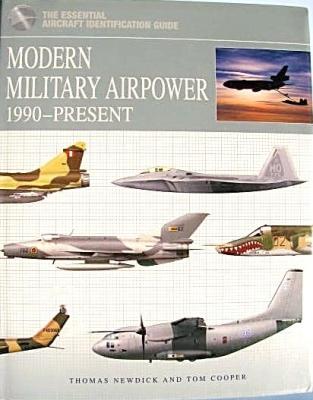
|
Modern Military Airpower 1990 - PresentPublished:
In this new offering from Casemate Publishing, authors Thomas Newdick and Tom Cooper, provide the modern aviation enthusiast with two-hundred full color aircraft drawings and forty photographs of everything flown today by squadrons around the globe. In the one hundred and ninety-two informative pages, there are some fifty-thousand words of text providing information on not just the aircraft themselves, but also on the branch of service for the country using them. The book is logically divided up by regions for the chapters, and then by countries within the regions. The opening page for each chapter shows a color line-drawing map for the region with the counties being covered within shown, making the book educational for geography as well as for the aircraft. The chapters, as… more |
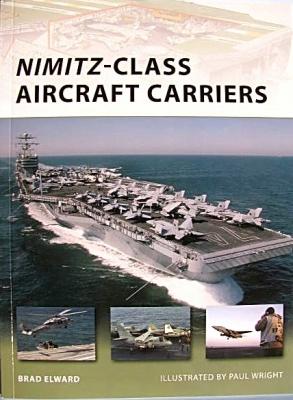
|
Nimitz - Class Aircraft CarriersPublished:
In this new offering from Osprey Publishing, author Brad Elward (and Illustrator Paul Wright) introduce the reader to the fascinating world of the Nimitz-class aircraft carriers of the United States Navy. Having served aboard the USS Dwight D. Eisenhower (CVN-69) and USS Abraham Lincoln (CVN-72), I quickly volunteered for this review when the book came out in a review list. As I possess a fair amount of knowledge on this subject myself, I am always looking to learn more about these magnificent ships, their history, and where the Navy plans to go in the future. After a half-page Glossary on page two, the “Contents” on page three inform the reader of the six main sections of the book, which are the “Introduction”, “Origins of the Supercarrier”, “Design and Development of the… more |

|
German Panther G with Steel Road WheelsPublished:
If you have read my previous review on Dragon’s 1/72 scale Panther with Zimmerit, you will see some similarities in this review, but whether it was reviews like mine that made a difference (as I am hoping), there are improvements that have been made. If you are like me, and have the 1/35 scale variant of this kit in your stash, I will let you know that this is essentially the same kit, along with the same markings as that release. This is another very nice release from the folks at Dragon, and the level of detail for this small scale is again impressive. The Panther is one of the most popular German vehicles of the Second World War, so I will not begin this review with my typical vehicle history. However, I will mention that the steel road wheels were originally envisioned to be… more |

|
"Psycho" Bates MansionPublished:
For fans of the “Psycho” movies that starred Anthony Hopkins as “Norman Bates”, this kit will bring back some fond or not so fond memories. This kit arrived just as my favorite time of year started, as I decorate for Halloween like no other holiday. I was also fortunate enough to have one of the movie channels recently run “Psycho”, “Psycho II”, and “Psycho III”, which provided good references for how to paint the house. When first released, this was a new kit made by Polar Lights, and it does a nice job of capturing the look and feel of the Bates mansion of the original “Psycho” movies (the remake with Vince Vaughn has a completely different house). As the original movie was made in black and white, the second and third movies are recommended for references, but you may want to… more |

|
"War of the Worlds" MartianPublished:
For fans of the older “War of the Worlds” movie and/or the television show from 1953, this little piece of nostalgia will bring a big smile to your face. After conducting some research during my construction of this kit, I found that this “Martian” represents one from the 1953 television show. It is actually a Mor Taxan, a creature from the planet Mor Tax. Looking at the photographs that I could find on line, this creature is an excellent representation of the characters from that particular show. Upon opening the rather large box for this release, you will find a clear plastic base, two clear plastic “face” pieces, and eight orange vinyl parts. The vinyl parts consist of a lower body, an upper body, two sets of arms (four in all), two books, a metal head for a “Martian” war… more |
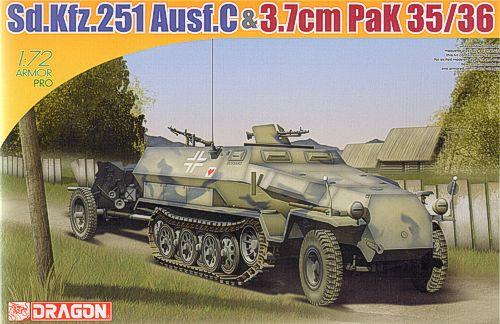
|
Sd.Kfz. 251 Ausf.C & 3.7cm PaK 35/36Published:
Let me begin this review as I did a previous one by stating that if you like 1/72 scale armor, you are going to love this kit, as Dragon has once again set the standard for others to follow. Included in this kit is not only a welded hull 251 Ausf.C half-track, but also a very well molded 3.7cm PaK 35/36 gun. The level of detail in the kit is right on par with their 1/35 scale kits, but will take up much less space on a shelf.
|

|
F-16 Pitot tube and Angle of Attack probesPublished:
In case you have already perused my review on the Master F-14 Alpha and Angle of Attack probe, this review was an added bonus when I voiced my interest to the Reviewer Corps. Unlike the Tomcat with a broken probe, I did not have a Viper in need of repair, nor did I have one assembled to add the parts to, but of course, I did have one or two sitting in my stash (there may be more, but please do not tell my wife). For the purpose of this review, I compared the Master set with what is provided in the Monogram release of a few years ago, which is actually a Revell Germany kit (according to the sprues anyway). With this item, which is part of their Air Master line, you receive a pitot tube (the large tube on the front of the nose cone) as well as two Angle of Attack (or AOA) probes… more |

|
U-boat IXC Turn-II U-176Published:
German U-boat U-176 was ordered on 23 December 1939, and had her keel laid on 6 February 1941. She was launched on 12 September 1491, and was commissioned on 15 December in 1941 at Deschimag AG Wesser in Bremen. The boat was lost with all fifty-three hands on 15 May 1943, while on patrol near Havana, sunk by the Cuban patrol boat CS-13 after being spotted by an American OS2U Kingfisher on watch in the area. During the boat’s career, she served under a single commanding officer, Reiner Dierksen, performed training cruises with the fourth flotilla from 15 December 1941 until 31 July 1942, and was the front boat of the tenth flotilla on a cruise beginning 1 August 1942 until her loss. There were eleven ships sunk by U-176 during her career, consisting of 53,307 gross rated tons. … more |
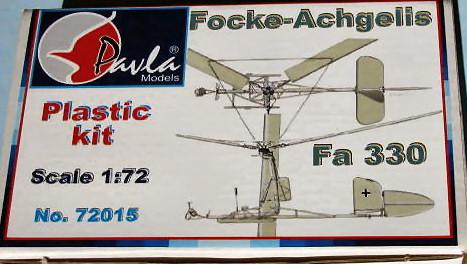
|
Focke-Achgelis Fa-330Published:
After being let go from Focke-Wulf in 1936, Heinrich Focke went on to form the Focke-Achgelis company with Gerd Achgelis. The goal was to focus on the development of helicopters for Germany. The Fa-330 Bachstelze, or “wagtail” in English, was actually a rotary-wing kite that was typically towed behind Type IX U-boats via a 500 foot tow line. The aircraft could be deployed by only two crewmembers, and could be launched and attain full altitude in about seven minutes, providing about twenty-five miles of visibility while searching for targets for the U-boat. The U-boat moving forward at around 18 knots was sufficient to keep the aircraft flying. Unfortunately, the process for reeling the aircraft back in took considerably longer, so if under attack, the best option was to cut loose the… more |
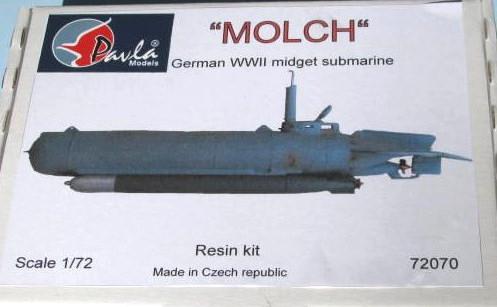
|
Molch Midget SubmarinePublished:
The “Molch” (German for "Salamander" or "Newt") was the first midget submarine developed by the Kriegsmarine, with the intention being a single person manned delivery vehicle for a pair of torpedoes. The first Molch was delivered on 12 June 1944, and AG Weser in Bremen would build nearly four hundred (depending on the reference, the number varies from 363 to 393). The electric propulsion system was designed for coastal operations, providing a range of 40 miles at a submerged speed of 5 knots. The complicated trim and dive controls made combat operations hazardous at best for the submariners, and the boats were later relegated to train submariners for using the follow-on, more advanced mini-subs. Molch midget submarines were used in the Mediterranean in Operation Dragon along the… more |
